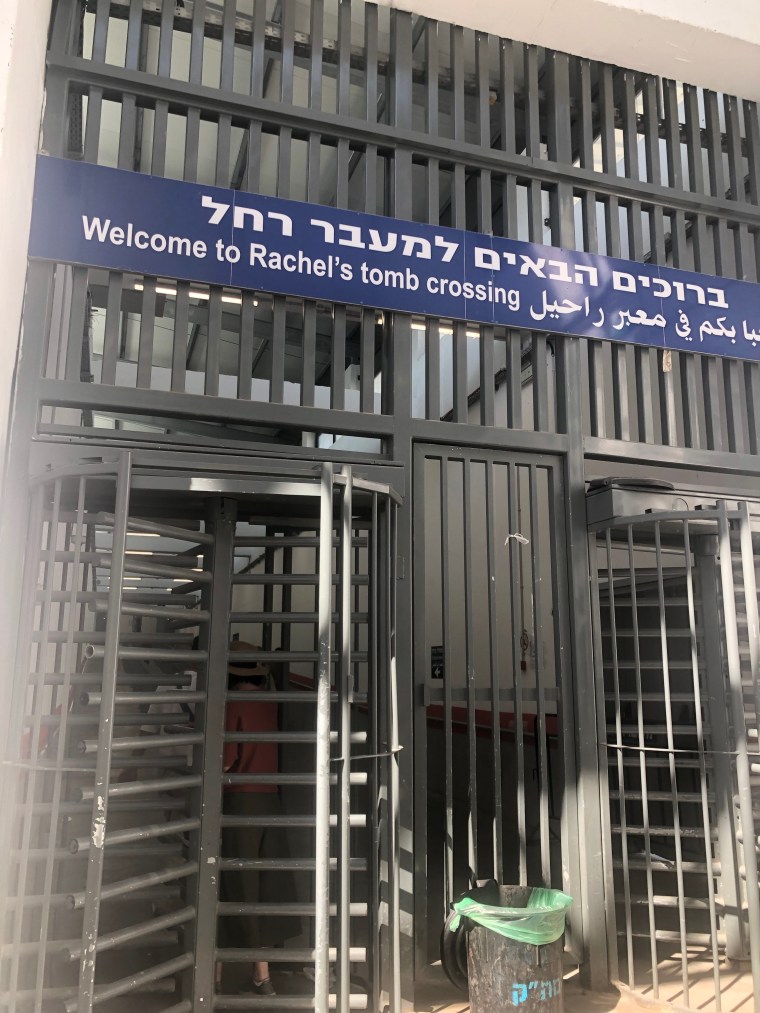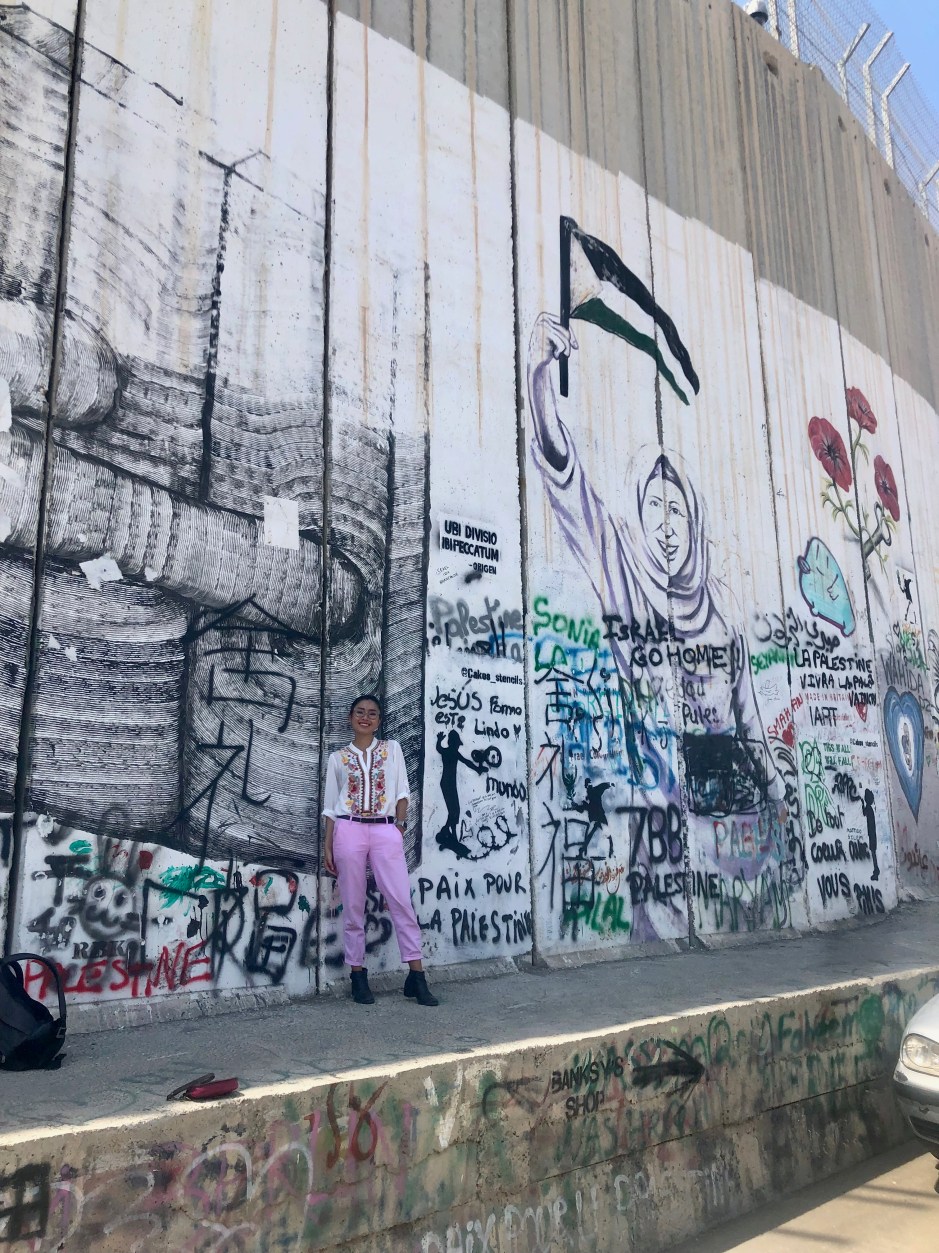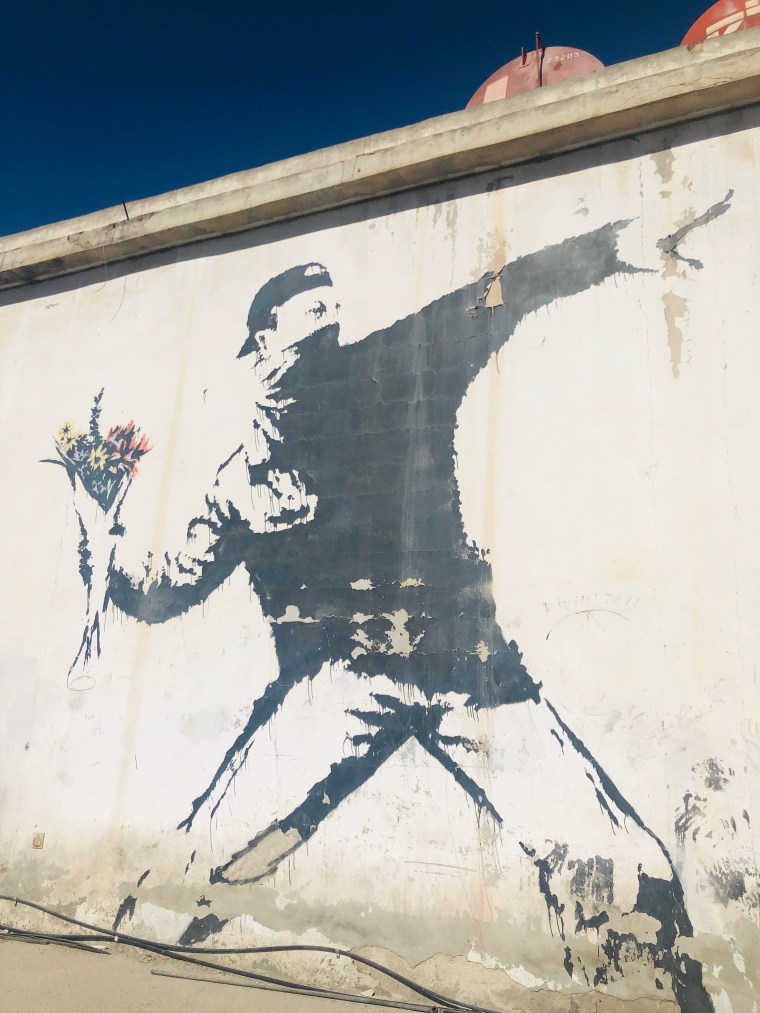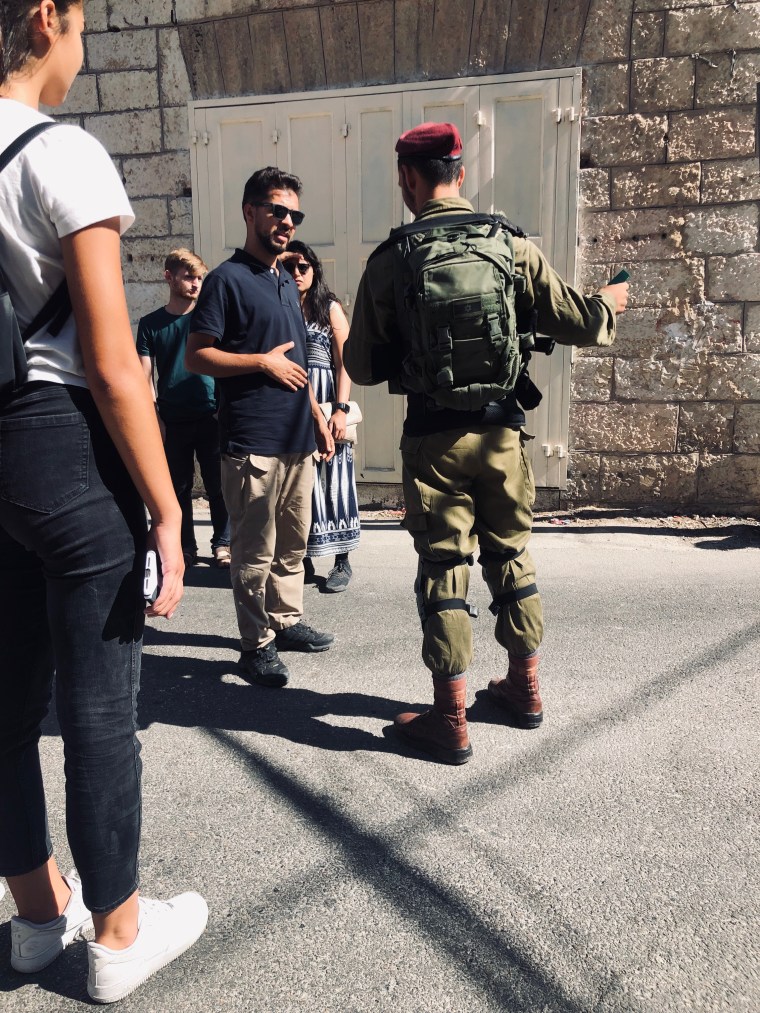After a brief intermission featuring the World Holocaust Museum, it was back to research on the West Bank border graffiti.
After devoting my first full day in Israel-Palestine to taking a comprehensive tour with a Palestinian guide, all I had left in mind to do with the remainder of my time was go back on my own and have a closer look at the artwork. Easy, right?

More like easier said than done. It shouldn’t have been as surprising to me as it was, but it’s rather difficult to travel between Israel and Palestine. It must have something to do with how the two regions don’t get along with each other (and haven’t for years), and how Palestinians are prevented by law from entering Israel and Israelis are prevented by law from entering Palestine. Just a wild guess.
As a foreigner, you are free to visit both — in fact, you’re even free to visit the Gaza Strip, though you probably shouldn’t unless you’re a specialized humanitarian aid worker. But just because you are free to visit the areas, doesn’t mean it’s a stress-free experience. In fact, for me, it actually was rather stressful because for the life of me, I couldn’t figure out how best to get from Jerusalem (on the Israel side) to Bethlehem (on the Palestine side) via public transport.
This guide ended up being rather useful for me, but as it turns out, it was a little over a year old and difficult to follow at points. I’ve decided to compile my own little guide below:
How to take public transport from Jerusalem to Bethlehem: A Traveler’s Guide (2019)
Congratulations! You’ve decided to take some time out of your trip to Jerusalem to visit its neighboring city, Bethlehem. Lots of solo travelers visiting Israel miss out on visiting Palestine because of how difficult it is to get there without a tour guide to help you. Good on you for deciding to broaden your horizons and check out a part of Israel-Palestine that many don’t want you to see.
Though the two cities are right next to each other, they’re divided along political boundaries (and with a physical barrier called the West Bank border) that make taking public transport between them rather complicated. Whether you’re going to see the Banksy hotel or the Church of the Nativity, you can use this guide to get from Jerusalem city center to Bethlehem.

Note: when traveling between Israel and Palestine, always remember to carry your passport with you! You will need it to cross any checkpoints. Additionally, you never know when you’re going to be stopped by a police officer or soldier and asked to show your papers. The reality is that they use a lot of racial profiling to determine who to stop, so if you look definitively “foreign,” you may be less likely to be suspected of being a Palestinian trying to sneak into Israel (or vice versa), but it’s best to be safe!

- From Jerusalem Old City, you’re going to want to head to Damascus Gate, the gate opposite Jaffa Gate, a common meeting point for tour groups. Just across the street from Damascus Gate, you’ll find the bus station for the Palestinian bus company, South Bus Company. South Bus Company is the only one that offers transport from Jerusalem into Bethlehem; the Jerusalem bus company, Egged, will get you near the border, but it cannot take you into Bethlehem. You can tell South Bus Company buses apart from Egged buses because South Bus Company buses are blue and white while Egged buses are green.
- South Bus Company runs three routes from Damascus Gate:
- The 234, “Checkpoint 300” (formerly the 24) — this bus travels from Damascus Gate to Checkpoint 300 (sometimes also known as the Rachel’s Tomb crossing). It does not technically go into Bethlehem. The bus will drop you off outside of the Checkpoint 300 terminal, at which you will have to cross the border on your own. This is what I did, as the 231 was not running the day I tried to visit. It’s a little scary at first, but with your foreign passport, the soldiers will hopefully not give you a hard time. They’re less concerned about people trying to get in to Palestine as they’re concerned about people trying to get out.
- This is a good route to take if you’re only interested in seeing the West Bank border graffiti or the Banksy Hotel. They are within a 10 minute walk of the Checkpoint 300 exit. Use Google Maps to navigate you to the Banksy Hotel, and from there, you should be very easily able to follow the perimeter of the wall to see the art.
- Checkpoint 300 can be very busy depending on what time of day you visit! Try to avoid morning and evenings of weekdays, as many Palestinians will be crossing to leave for work/return home from work at these times
- After you exit Checkpoint 300 on the Bethlehem side is a great place to grab a taxi, if you want one.
- The 231, “Beit Jala” (formerly the 21) — this bus travels from Damascus Gate to Bethlehem City Center, near the Church of the Nativity. This bus route does not require you to deal with Checkpoint 300 on your own, but you will still have to wait for the police to check the papers of every passenger. Because of this, you may be held up for some time. This is the route I tried to take, but for whatever reason, it was not operating that day, and I had to take the 234 instead.
- The 232, “Beit Safafa” (formerly the 22) — this was the route on which I was able to find the least amount of information. I know that it begins at Damascus Gate like the other two, but I was not able to find where it actually terminates. From what I could gather, I believe this bus may go all the way into Hebron, but I am not certain.
- If you have any information on the 232 route, let me know and I’ll add it to the guide!
- The 234, “Checkpoint 300” (formerly the 24) — this bus travels from Damascus Gate to Checkpoint 300 (sometimes also known as the Rachel’s Tomb crossing). It does not technically go into Bethlehem. The bus will drop you off outside of the Checkpoint 300 terminal, at which you will have to cross the border on your own. This is what I did, as the 231 was not running the day I tried to visit. It’s a little scary at first, but with your foreign passport, the soldiers will hopefully not give you a hard time. They’re less concerned about people trying to get in to Palestine as they’re concerned about people trying to get out.
- Fare for one trip is 5 NIS, or approximately 1.42 USD. You can only pay in cash.
- Here’s South Bus Company’s official website that you can see the latest info on. They only have their website in Hebrew and Arabic, so use Google Translate if you need English (or another language). The site shows you routes and the schedules.
- Note that in Palestine and Israel, the working week is Sunday-Thursday. From sundown Friday to sunrise Sunday, Jews (so, Israelis in particular) observe Shabbat, meaning that public transport in Jerusalem is not widely available. As a result, on the schedule, you’ll see Sunday-Thursday, then Friday and Saturday schedules.
- Be mindful of time if you’re traveling very far into Palestine. Within Bethlehem and the rest of the West Bank, there are more checkpoints beyond the initial checkpoint crossing, depending on whether you are technically in Palestinian or Israeli territory. Each checkpoint has certain hours of operation, so you do not want to get caught on the wrong side of a checkpoint after it has closed!
- Checkpoint 300, the main checkpoint for crossing between Jerusalem and Bethlehem, is supposedly open 24/7. However, I have also heard that Palestinians will queue for hours in early morning in order to ensure that they can get to work on time in the morning, so just because a checkpoint is permanently staffed, does not mean that processing will be efficient at all hours of the day!
- To return to Jerusalem at the end of your travels, simply catch the bus again from where you got off. You will need to pay another 5 NIS fare. You can either ride the bus all the way back to Damascus Gate in Jerusalem or signal the bus driver (usually a wire to pull or button to press) that you want to get off at any of the stops in Bethlehem or Jerusalem along the way.

Let me know if you have any particular questions or if there’s anything you think I need to elaborate on further! This is all just based on my experience over the summer; no guarantee of course that things will be the same when you visit. If you have any information to add based on your travels, please leave a comment!
That’s about it for today. Thanks for reading, and I’ll see you in the next one with more updates on my trip to Israel-Palestine this summer. Don’t forget to check me out on Pinterest, Instagram, Facebook, Bloglovin, Twitter, and Tumblr! For business inquiries, shoot me an email at lensembledujour@gmail.com!
Top: TJ Maxx
Trousers: J.Crew










